Density, Floating and Sorting
Quality coffee can only be obtained through a systematic process which requires an immense attention to detail. Controlling quality from seed to cup begins with mindful coffee pickers; following this step in the supply chain, many skilled jobs and quality control measures go unnoticed by the end consumer. Once the coffee cherries are brought to the wet mill after a picking day, there is a floating process which removes many defects and sorts the coffee into different qualities and densities.
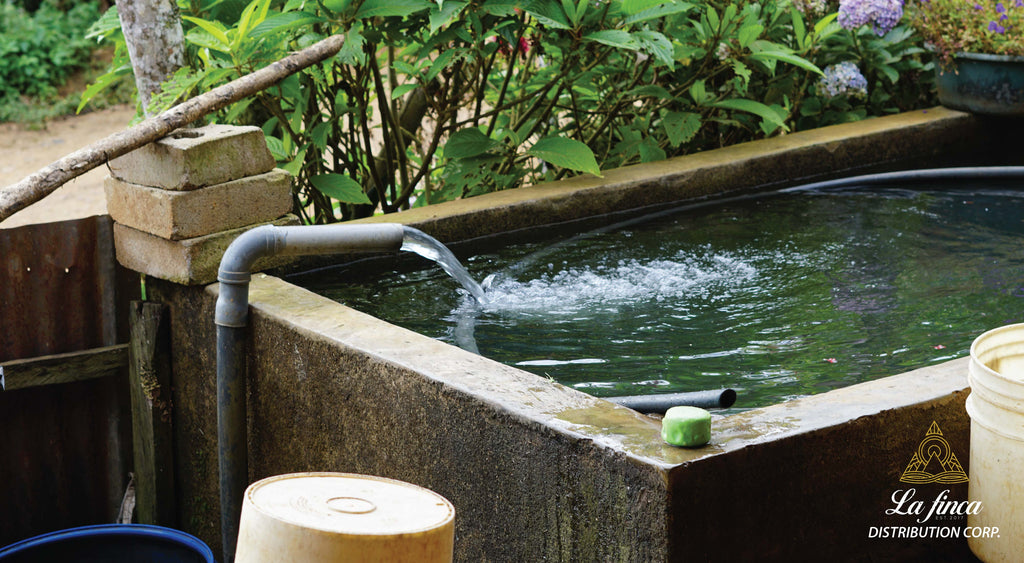
Cement tank being filled with recycled water for the floating process on finca Los Angeles in San Juan del Rio Coco, Madriz, Nicaragua.
In order to talk about floating and sorting, we have to explain why density is important. In coffee growing regions with high elevation, temperatures decrease and the coffee bean's cellular respiration slows down, allowing the bean to retain more sugar and nutrients. These sugars and precursors become activated during the roast process and bring out more flavor than less dense coffee beans. Coffee bean density is important for roasters down the supply chain. It helps them determine their charge temperature and if sorted correctly, it will lead to a more even roast color and profile.
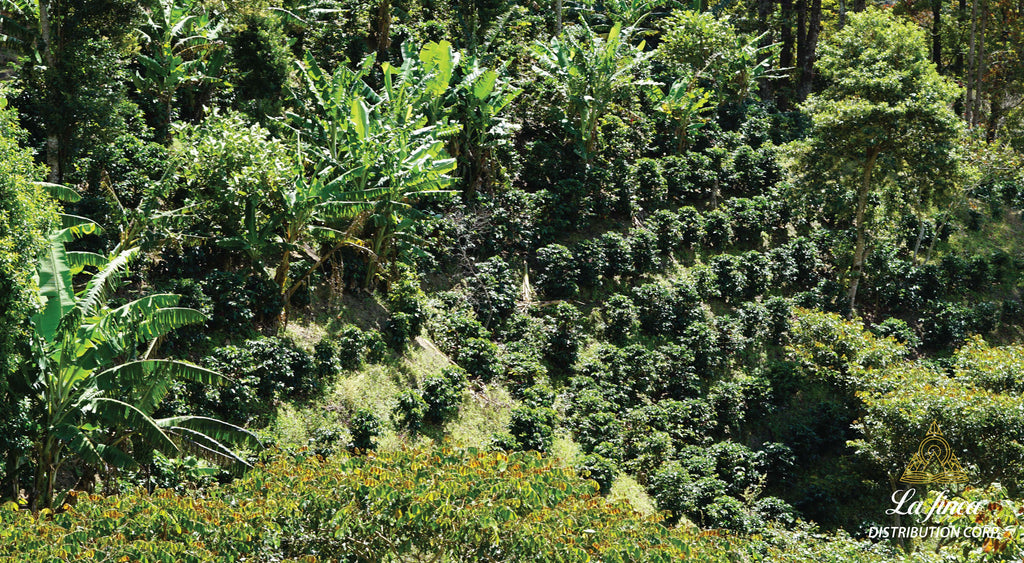
Coffee plants grown at 1500m above sea level on finca La Benedicion produced by Sergio Jarquin in Mozonte, Nueva Segovia, Nicaragua.
High elevation isn't the only factor in slowing cellular respiration and greater bean density, the way the coffee is planted also has a significant impact. A large hillside facing the North is an ideal landscape for planting coffee, because it will get minimal direct sunlight exposure during peak hours. Coffee planted around shade bearing trees lowers the temperature and slows cellular respiration; furthermore, coffee plants that are planted close and tight together create their own shade and a cooler environment for more dense beans.
 Red Catuai plants planted tightly to create their own shade in Aranjuez, Matagalpa, Nicaragua.
Red Catuai plants planted tightly to create their own shade in Aranjuez, Matagalpa, Nicaragua.
Floating coffee is an easy way to improve the quality of coffee on a farm. Most expensive wet mill machines have a floating system built into them, but not many producers can afford this luxury. Before the washed process, coffee is placed into a tank that is filled with recycled water and flows into cement channels. The space between the large tank and channels is blocked by wood to allow the tank to fill with water. As the coffee cherries begin to float, blocks are removed to allow the "floaters" to pass through the channel. The first set of "floaters" are lesser dense coffee beans and can be underripe, overripe or defective beans.There are many other cost effective ways to build a floating system, for example: A float system can be made by filling a plastic barrel with water and attaching a pvc pipe to the bottom, to expel the more dense coffee cherries into a tank where they can be collected. Another pvc pipe can be connected to the top of the barrel to expel the lesser dense or defective beans into another barrel or tank to be collected as "segundas" for personal consumption.
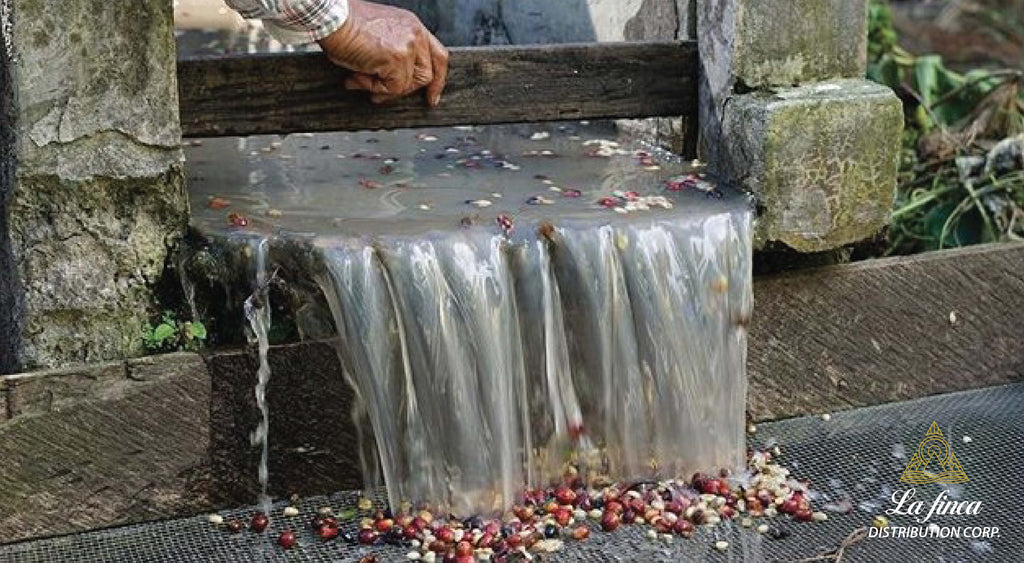
Wooden blocking placed in a cement channel during the float process to seperate densities and qualities on finca Las Flores in Pueblo Nuevo, Esteli, Nicaragua.
Floating before naturally processing coffee has been a debate among many coffee producers and both parties have legitimacy in their argument. One side believes floating natural coffee washes a lot of the sugar off the bean; the other party insists on floating naturals to remove defects early, because they are much harder to detect later in the drying process. We suggest sacrificing a little sugar and floating the coffee cherries, in our experience, this has lead to a more cleaner natural profile.
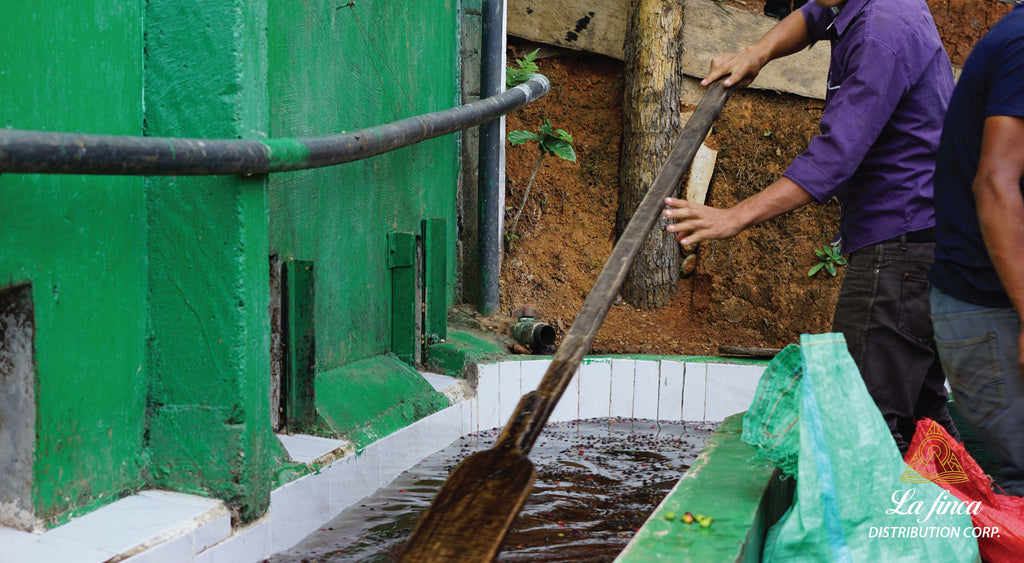
Coffee cherries being paddled to through the channel to move them along and bring the "floaters" to the top on finca Los Angeles in San Juan del Rio Coco, Madriz, Nicaragua.
Sorting and classifying coffee cherries by density can give coffee producers another stream of income. Rather than selling all the coffee blended, sorting coffee can give producers access to both specialty markets overseas and the internal market within the country, thus giving them ability to earn more every harvest. This small added step within the supply chain can help a producer achieve a higher cupping score and a more consistent and developed coffee.
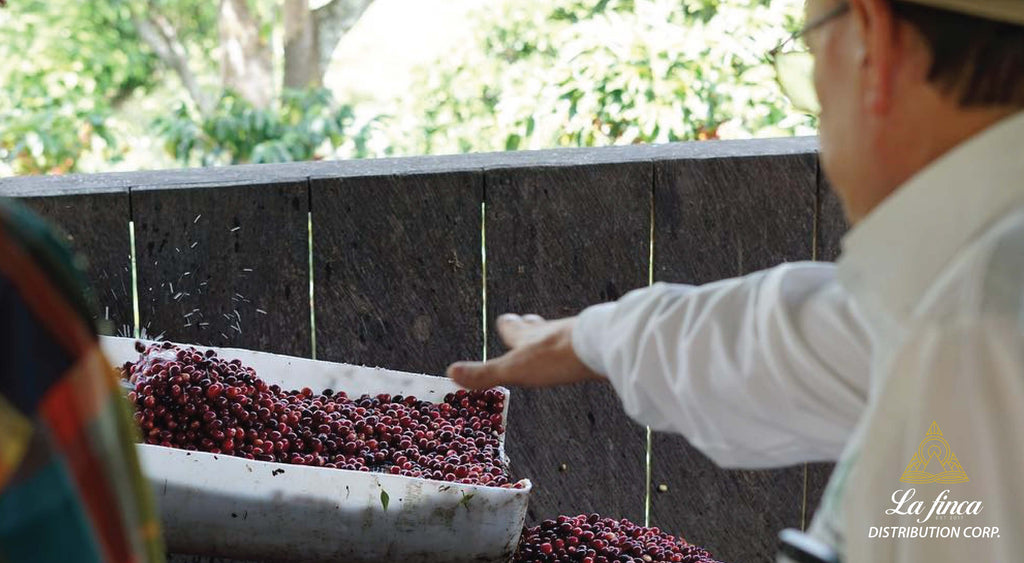
High-quality. dense coffee cherries produced by Gonzalo Castillo being collected after the float process on finca Las Promesas de San Blas in Dipilto, Nueva Segovia, Nicaragua.
Before coffee is placed on a drying bed or patio, it goes through an important chain of quality checks to ensure the best gets into the consumers hands. Classifying coffee beans by density on the farm, prior to moving along the supply chain, can be an easy and inexpensive way to improve quality. Better quality enables producers to earn a greater price for their coffee, creating a more sustainable industry.
